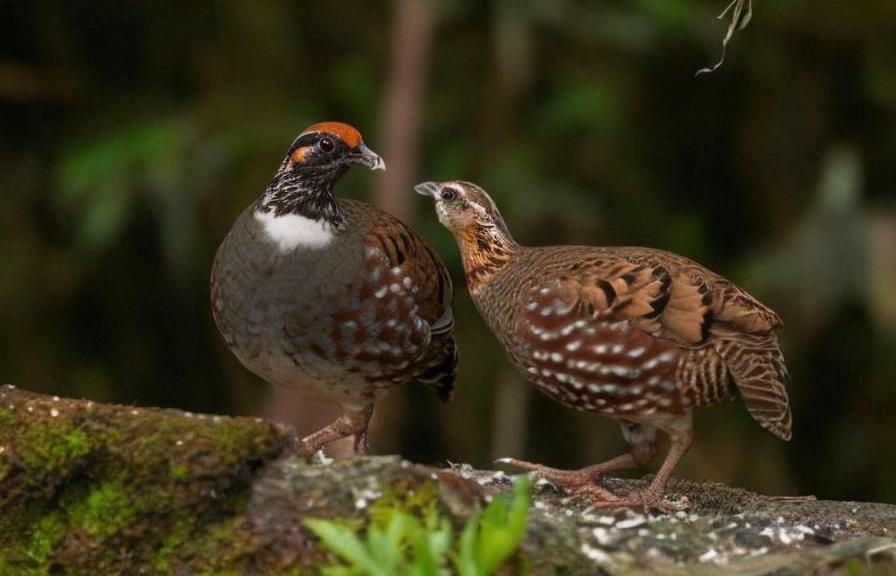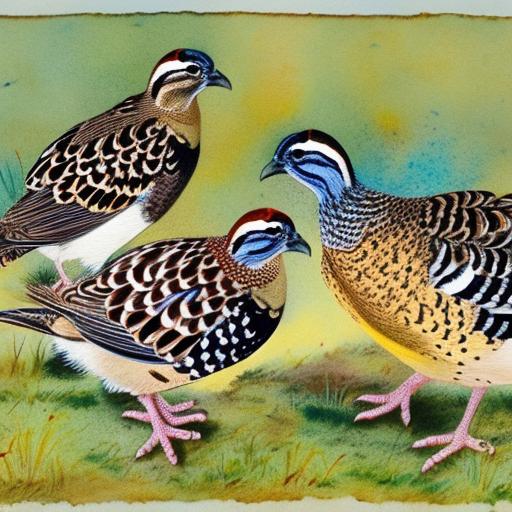Quail farming has gained popularity in India in recent years due to the increasing demand for quail meat and eggs. Quails are small, ground-dwelling birds that are known for their fast growth, high egg production, and adaptability to various environmental conditions. There are several quail breeds that are suitable for farming in India, each with its own unique characteristics and traits. These breeds have been developed through selective breeding to meet specific farming needs and preferences. In this article, we will explore the popular quail breeds in India, their characteristics, benefits, and challenges of raising them, as well as tips for selecting the right breed for your farm.
Key Takeaways
- Quail farming is gaining popularity in India due to its low investment and high returns.
- Popular quail breeds in India include Japanese quail, Bobwhite quail, and Coturnix quail.
- Different quail breeds have varying characteristics such as size, egg production, and adaptability to different climates.
- Raising quail in India has benefits such as high protein meat and eggs, low space requirement, and quick maturity.
- Challenges in quail farming in India include disease management, market demand, and government regulations.
Popular Quail Breeds in India
1. Japanese Quail (Coturnix japonica): The Japanese quail is one of the most popular quail breeds in India. It is known for its high egg production, fast growth, and adaptability to various environmental conditions. Japanese quails are small in size, making them easy to handle and manage on the farm. They are also known for their calm and non-aggressive nature, making them suitable for small-scale farming operations. Japanese quails come in a variety of colors, including white, brown, and tuxedo, making them visually appealing as well.
2. Bobwhite Quail (Colinus virginianus): The Bobwhite quail is another popular breed in India, known for its excellent meat quality and unique calling sound. They are native to North America but have been successfully raised in India for their meat production. Bobwhite quails are slightly larger than Japanese quails and have a distinctive white and brown speckled plumage. They are known for their strong flying ability, making them suitable for free-range farming systems. Bobwhite quails are also known for their adaptability to different climates and are relatively easy to raise.
Characteristics and Traits of Different Quail Breeds
1. Japanese Quail: Japanese quails are known for their high egg production, with each bird laying up to 300 eggs per year. They reach maturity quickly, with hens starting to lay eggs at around 6-7 weeks of age. Japanese quails are also known for their calm and non-aggressive nature, making them easy to handle and manage on the farm. They are adaptable to various environmental conditions and can thrive in both cage and free-range systems. Japanese quails come in different color variations, including white, brown, and tuxedo, adding visual appeal to the farm.
2. Bobwhite Quail: Bobwhite quails are known for their excellent meat quality, with a delicate flavor and tender texture. They are slightly larger than Japanese quails and have a distinctive white and brown speckled plumage. Bobwhite quails are also known for their strong flying ability, making them suitable for free-range farming systems. They are adaptable to different climates and can thrive in various environmental conditions. Bobwhite quails are relatively easy to raise and manage on the farm, making them a popular choice for meat production in India.
Benefits of Raising Quail in India
1. High Egg Production: Quails are known for their high egg production, with some breeds laying up to 300 eggs per year. This makes them a profitable option for farmers looking to enter the poultry industry. Quail eggs are also considered a delicacy and are in high demand in the market.
2. Fast Growth: Quails reach maturity quickly, with hens starting to lay eggs at around 6-7 weeks of age. This fast growth rate allows farmers to quickly establish a productive flock and start generating income from egg sales.
3. Adaptability: Quails are highly adaptable birds that can thrive in various environmental conditions. They can be raised in cages or free-range systems, making them suitable for different farming setups.
4. Meat Production: Quails are also raised for their meat, which is considered a delicacy in many parts of the world. Quail meat is lean, tender, and has a delicate flavor, making it a popular choice among consumers.
Challenges and Considerations for Quail Farming in India
1. Disease Management: Like any other poultry species, quails are susceptible to various diseases and health issues. Farmers need to implement strict biosecurity measures and vaccination protocols to prevent disease outbreaks on the farm.
2. Market Demand: While there is a growing demand for quail meat and eggs in India, farmers need to carefully assess the market demand in their region before starting a quail farming operation. Understanding consumer preferences and market trends is crucial for success in the industry.
3. Regulatory Compliance: Farmers need to be aware of the regulatory requirements and guidelines for quail farming in India. This includes obtaining necessary permits, following animal welfare standards, and complying with food safety regulations.
4. Infrastructure and Equipment: Setting up a quail farming operation requires investment in infrastructure and equipment such as cages, feeders, waterers, and incubators. Farmers need to carefully plan and budget for these expenses before starting their farm.
Tips for Selecting the Right Quail Breed for Your Farm

1. Farming Goals: Consider your farming goals and objectives when selecting a quail breed. Are you primarily interested in egg production or meat production? Different breeds have different strengths, so choose one that aligns with your goals.
2. Climate Adaptability: Consider the climate and environmental conditions in your region when selecting a quail breed. Some breeds may be better suited for hot or cold climates, so choose one that can thrive in your local environment.
3. Market Demand: Research the market demand for quail meat and eggs in your region. Choose a breed that is popular among consumers and has a strong demand in the market.
4. Availability of Breeding Stock: Consider the availability of breeding stock for your chosen quail breed. Ensure that you can easily source chicks or hatching eggs from reputable suppliers.
The Future of Quail Farming in India
Quail farming has a promising future in India due to the increasing demand for quail meat and eggs. With the right breed selection, proper management practices, and market awareness, farmers can establish successful quail farming operations in the country. As consumer preferences continue to evolve and demand for alternative protein sources grows, quail farming presents an attractive opportunity for farmers looking to diversify their poultry business. By addressing the challenges and considerations associated with quail farming and implementing best practices, the industry has the potential to thrive and contribute to the country’s agricultural economy.
If you’re interested in learning more about quail breeds in India, you might also want to check out an article on PoultryWizard about the importance of a heater for a chicken coop. Understanding the heating needs of poultry can be crucial for maintaining the health and well-being of your birds, including quails. You can read the article here.
FAQs
What are the different quail breeds in India?
There are several quail breeds that are commonly found in India, including the Japanese quail (Coturnix japonica), the Bobwhite quail (Colinus virginianus), and the King quail (Excalfactoria chinensis).
What are the characteristics of Japanese quail?
Japanese quail are the most commonly raised quail breed in India. They are known for their high egg production, fast growth rate, and adaptability to various environmental conditions. They are also relatively easy to care for and are popular for both meat and egg production.
What are the characteristics of Bobwhite quail?
Bobwhite quail are native to North America but have been introduced to India for game bird hunting and as pets. They are known for their distinctive call and are popular for their meat and as game birds.
What are the characteristics of King quail?
King quail, also known as button quail, are the smallest of the commonly raised quail breeds in India. They are popular for their colorful plumage and are often kept as pets or for ornamental purposes.
What are the uses of quail breeds in India?
Quail breeds in India are primarily raised for their meat and eggs. They are also popular for game bird hunting, as pets, and for ornamental purposes due to their small size and colorful plumage.
Meet Walter, the feathered-friend fanatic of Florida! Nestled in the sunshine state, Walter struts through life with his feathered companions, clucking his way to happiness. With a coop that’s fancier than a five-star hotel, he’s the Don Juan of the chicken world. When he’s not teaching his hens to do the cha-cha, you’ll find him in a heated debate with his prized rooster, Sir Clucks-a-Lot. Walter’s poultry passion is no yolk; he’s the sunny-side-up guy you never knew you needed in your flock of friends!







